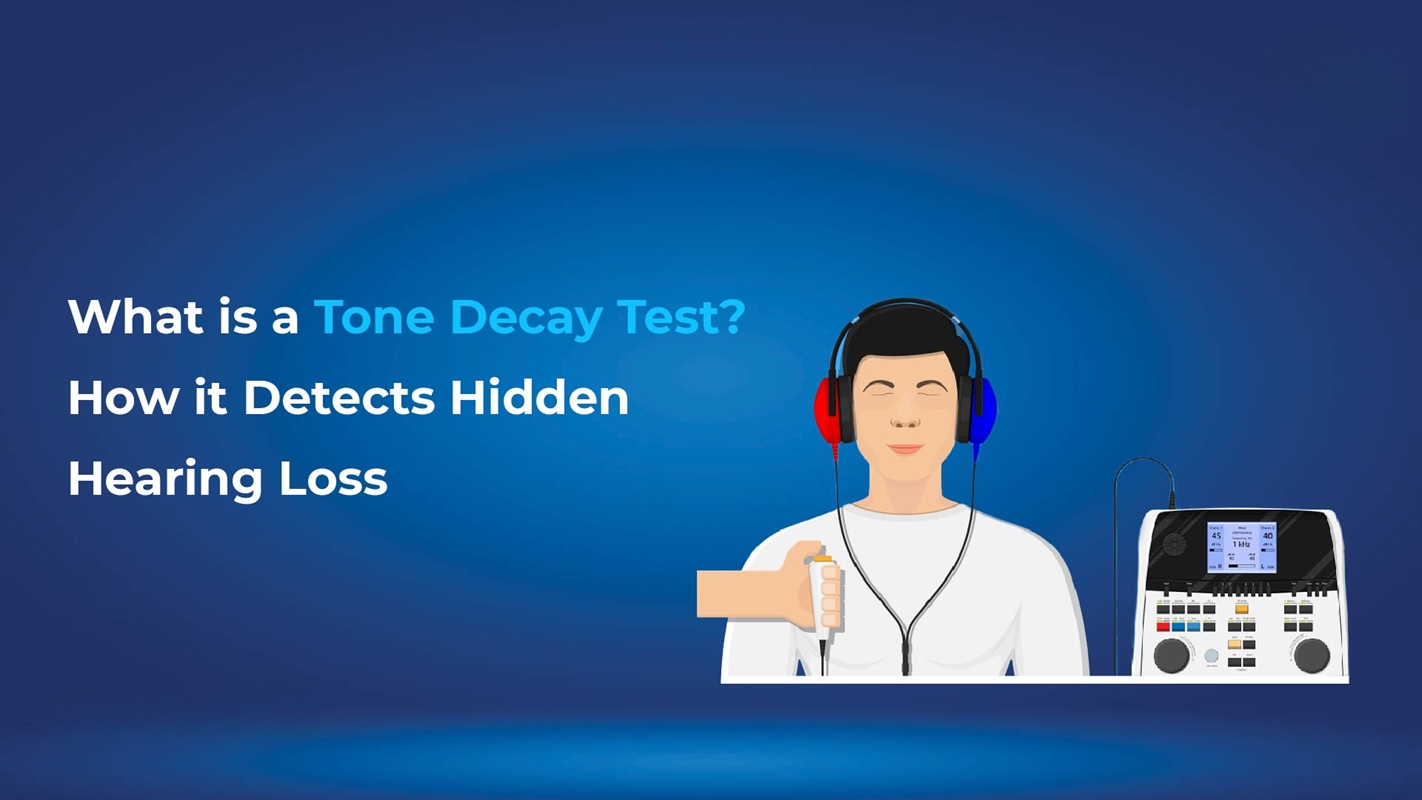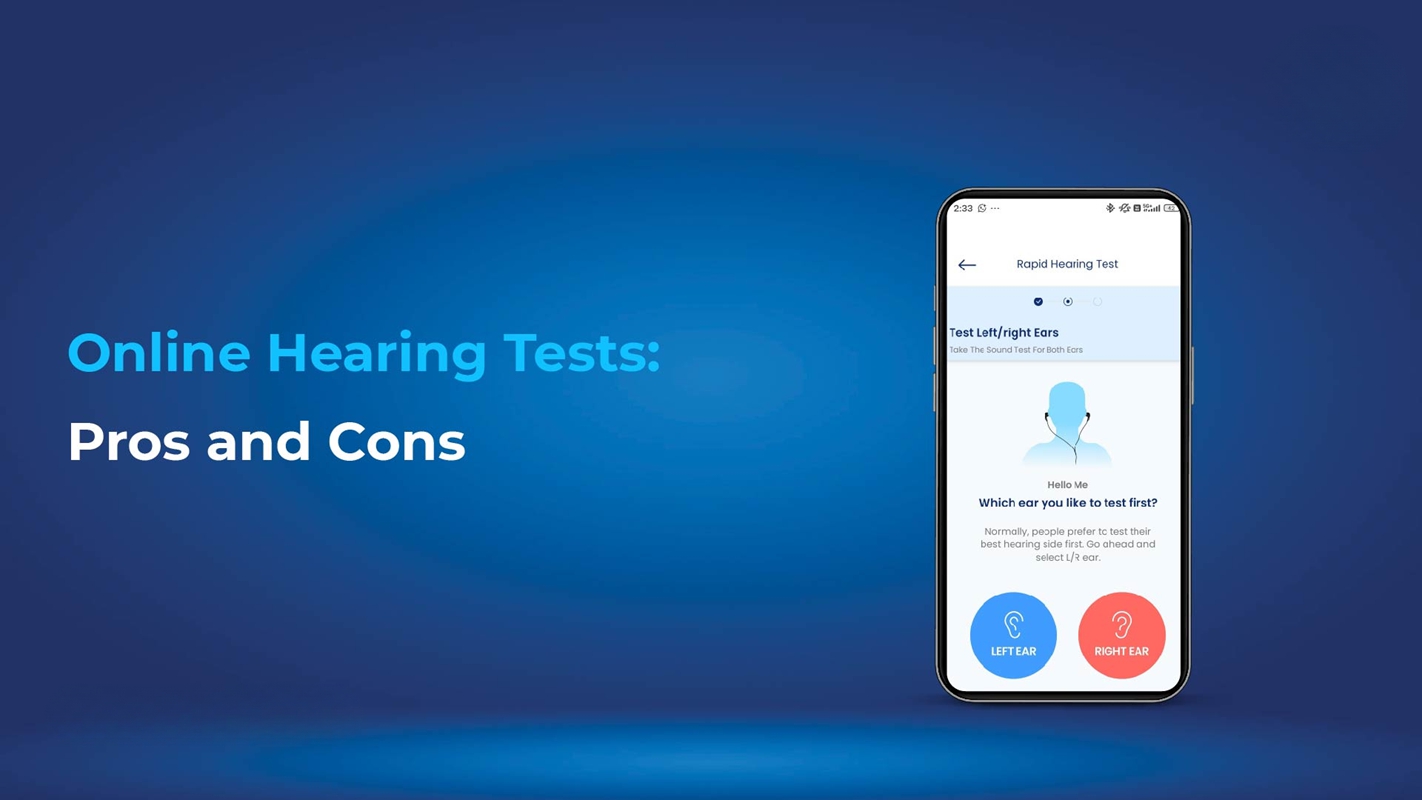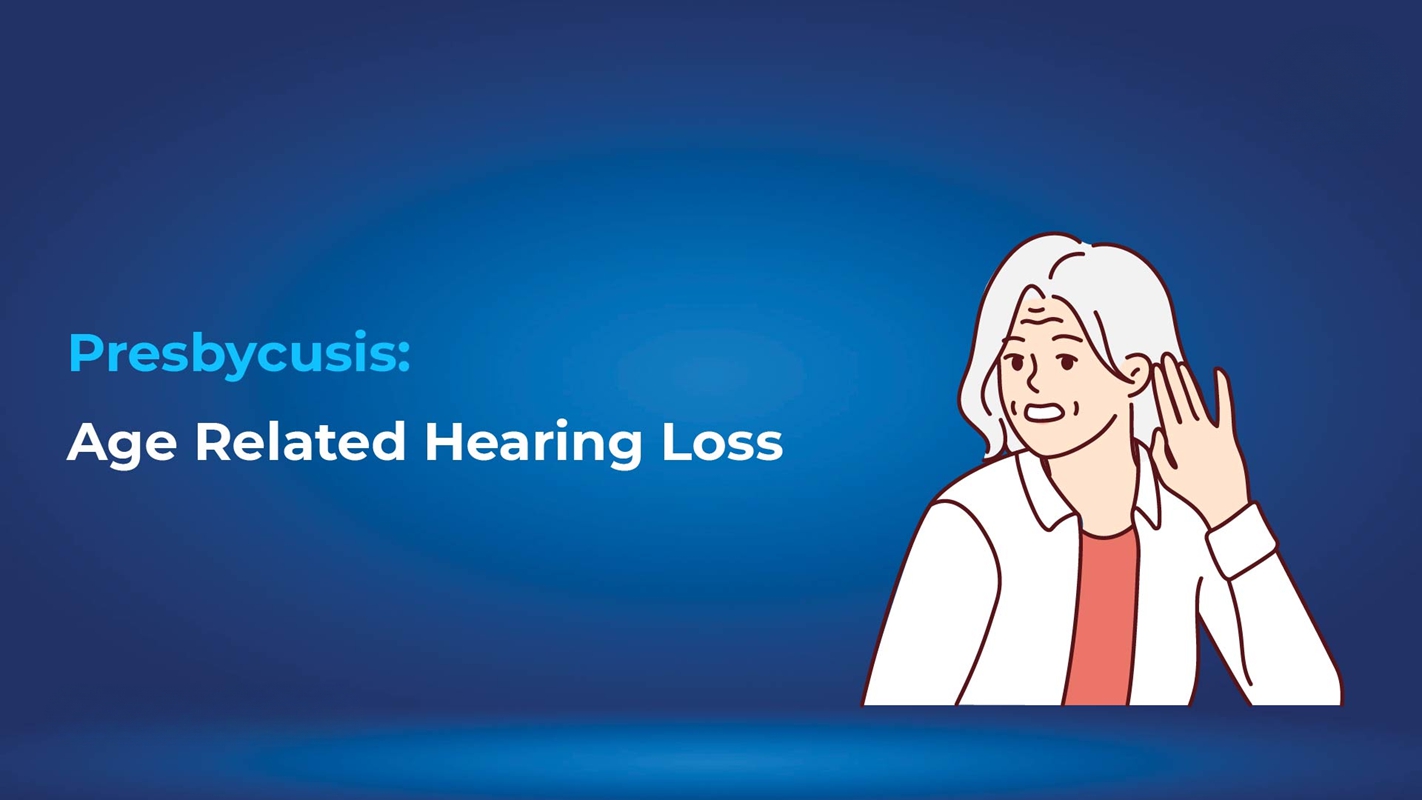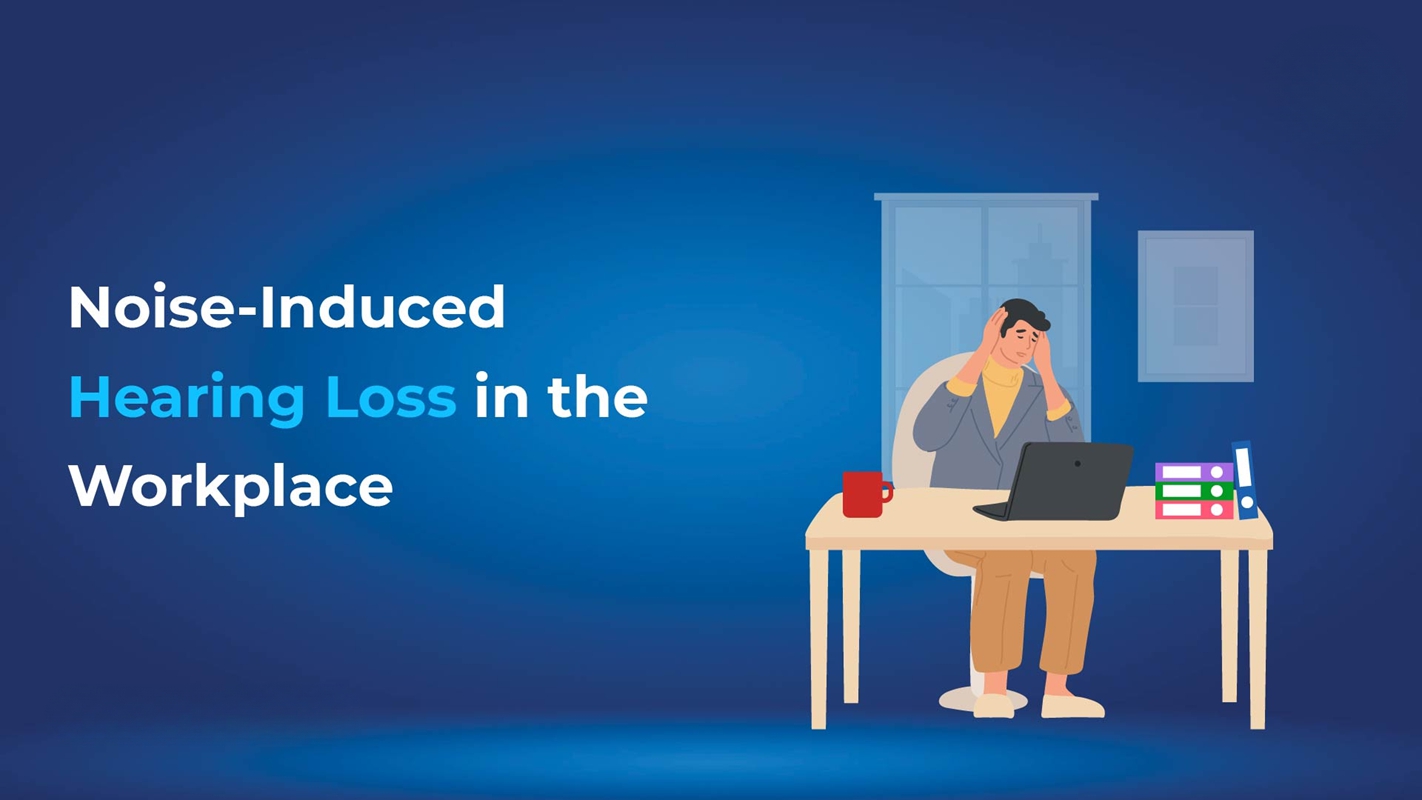Have you ever felt like a sound you were hearing just faded away even though it was still there? If so, you might be experiencing some auditory fatigue. To check for this, doctors use a Tone Decay Test.
This test is often recommended by ENT specialists when you have hearing issues that regular tests don’t explain. It helps detect nerve-related hearing problems when there’s a suspicion of damage to the auditory nerve.

What Is the Tone Decay Test?
The tone decay test checks how long you can hear a continuous sound. Normally, when a sound is played at a comfortable level, your ear should hear it for a full minute without it fading away. But if the sound disappears after a few seconds, that could mean your hearing nerve isn’t working properly. Simply, it’s a way to see if your ear gets “tired” of hearing a sound too quickly.
Tone Decay Test Procedure
The test is quick, painless, and non-invasive. Here’s what you can expect:
You’ll wear headphones: You’ll sit in a quiet room with headphones on, just like a regular hearing test.
Soft tones will be played
The audiologist will first find the quietest tone you can hear. Then, they’ll play that tone a bit louder, just enough to be heard.You’ll respond if the sound fades: If the sound disappears while it’s still playing, you’ll let the audiologist know.
The volume is adjusted: The sound will be played again at slightly higher levels until you can hear it for a full minute without it fading.
This test is done in both ears and takes around 15 to 30 minutes.
Why Is This Test Important?
The tone decay test helps detect hearing loss caused by nerve issues. That includes problems like:
Nerve fatigue ( hearing nerve gives up quickly)
Tumors on the hearing nerve
Early signs of nerve-based hearing loss
While normal hearing tests check how well you detect sounds, the tone decay test audiology checks how long your ear can hold on to sounds. That’s why it’s often used when other tests come back normal but you’re still having trouble hearing clearly.
What Should You Know Before the Test?
You don’t need to prepare in advance
It’s safe and doesn’t hurt
It helps doctors understand what’s going on with your hearing
Interpretation of Tone Decay Test Results
If you've recently had a Tone Decay Test interpretation, you're probably wondering what the results really mean. This test is more than just another hearing check — it's designed to uncover specific problems with your hearing nerve that standard tests might miss.
Let’s break down how to understand your tone decay test results and what they say about your overall hearing health.
What Do Tone Decay Test Results Measure?
The tone decay test interpretation looks at how long you can hear a continuous sound played at a comfortable volume. If your ear “gives up” and stops hearing the sound even though it's still playing, that tells doctors something important.
Your results are usually measured in decibels (dB) — the higher the number of decibels needed to keep the sound audible, the more “decay” is happening.
What Is a Normal Result?
If you can hear the tone clearly for a full 60 seconds at a level only slightly above your normal hearing threshold (like 5 dB louder), that’s considered normal. This means your hearing nerve is working as it should, and you likely don't have auditory nerve damage.
Normal result = no tone decay or very mild decay (0–5 dB)
What Do Abnormal Results Mean?
If the tone fades away and the audiologist has to raise the volume significantly for you to hear it continuously, that could point to a problem in your hearing nerve — specifically, a condition called retro cochlear pathology.
Here’s how to interpret it:
Tone Decay Test vs. Other Hearing Tests
If you've been struggling with hearing issues, your doctor or audiologist might recommend several tests to understand the problem better. Among these, the Tone Decay Test stands out positively, but how is it different from standard hearing tests like audiometry?
Let’s break it down in simple terms to understand how these tests compare, and why the tone decay test can be a game-changer for early hearing loss diagnosis.
Early Diagnosis
Why the Tone Decay Test Matters for Early Diagnosis
One of the biggest advantages of the tone decay test is its ability to detect retro cochlear problems, which affect the nerve beyond the cochlea (inner ear). These problems are not always caught in standard hearing tests.
For example, someone might pass an audiogram but still feel like they can't hear clearly or lose sound after a few seconds. That’s where the tone decay test interpretation helps by checking for auditory fatigue—when your nerve can’t keep sending signals for long.
Catching these issues early can lead to quicker diagnosis of serious conditions like:
Sensorineural hearing loss
Auditory nerve damage
Acoustic neuroma (a type of non-cancerous tumor)
When Doctors Use the Tone Decay Test
Doctors, especially ENT specialists, use the tone decay test when:
You have one-sided hearing loss
Sounds seem to fade or disappear quickly
Other tests don’t fully explain your hearing symptoms
There's a need to explore ENT diagnostic tools beyond standard methods
Also Read: Pure Tone Audiometry Test
What is an OAE Test?
The above is the interpretation of Detecting Auditory Fatigue with a Tone Decay Test provided by Chinese hearing aid supplier Shenrui Medical. Link https://www.srmcm.com/Blog/Detecting-Auditory-Fatigue-with-a-Tone-De.html of this article is welcome to share and forward. For more hearing aid related information, please visit Blog or take a look at our Hearing aids products















